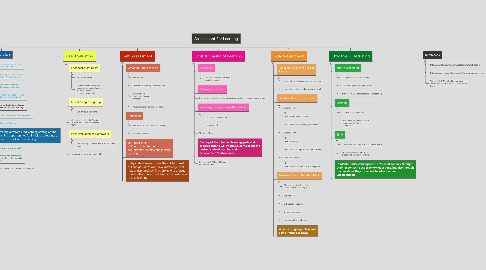
1. Peer Evaluation
1.1. Feedback from peers
1.1.1. 3 Stars and a wish
1.1.2. Students acting as learning resources for each other can promote a healthy learning environment
1.2. Questioning as a group
1.2.1. End-of-topic questions
1.3. what did we learn today? if you have learned it, help someone who hasn't
1.4. Peer Evaluation of Homework
1.4.1. students helping each other to improve their work
1.5. develops their socio-emotional skills
2. Explicit Sharing of Learning
2.1. Exit Cards
2.1.1. What students learned, what questions remain
2.2. Human Scatter Plot
2.3. http://www.ode.state.or.us/wma/teachlearn/edosc/1.-human_scatterplot.pdf
2.4. interview/conferences with students
2.4.1. short one on one session
2.4.2. review and reflect
2.5. Think Pair Share
2.6. Sharing of the intended learning goals and success criteria will inform students about the desired state of learning and achievement/performance
2.7. Discussion of WHY and HOW of student mistakes
3. Effective Questioning
3.1. open questioning
3.1.1. use question to expose learning
3.1.2. Questioning and posing questions
3.1.3. promotes higher order thinking and reasoning
3.2. Example
3.2.1. is Canada a Fair Society?
3.2.2. What would a penny tell future generations about our civilization?
3.3. Time
3.3.1. Giving time for students to formulate answers
3.3.2. expecting every student to be prepared to answer at any time
3.4. Students’ understanding can be exposed not only through their responses to the teacher’s questions, but also through the questions they formulate to advance their understanding.
4. Self-Assessment
4.1. Creating Habits of Mind
4.1.1. Persistence
4.1.2. Think about thinking - metacognition
4.1.3. Listening with understanding and empathy
4.1.4. Questioning and posing questions
4.2. Reflection
4.2.1. Formal Written Reflection - journaling
4.2.2. informal reflection
4.3. self-assessment will help promote their self-directed learning and lifelong learning.
4.4. independent learners have the ability to seek out and gain new skills, new knowledge, and new understandings. They are able to engage in self-reflection and to identify the next steps in their learning
5. Quality Feedback
5.1. Feedback About the Task or Product
5.1.1. How well are the tasks understood/performed
5.1.2. corrective feedback or knowledge of results
5.2. Feedback About the Process
5.2.1. Scaffold Prompts
5.2.1.1. attention on specifics
5.2.1.2. delve into questions/statements
5.2.2. Example Prompts
5.2.2.1. modelling
5.2.2.2. specific support to continue further
5.2.3. Reminder Prompts
5.2.3.1. redirect attention to learning goals
5.3. Feedback About Self-Regulation
5.3.1. Monitor, direct and regulate actions towards learning goal
5.3.2. Self-Efficacy
5.3.3. Self-regulated Learning
5.3.4. Confidence Levels
5.3.5. meta-cognitive strategies
